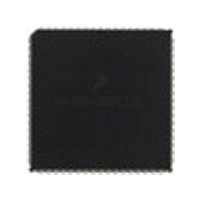MC68HC711KS2CFN3 Freescale Semiconductor, MC68HC711KS2CFN3 Datasheet - Page 156

MC68HC711KS2CFN3
Manufacturer Part Number
MC68HC711KS2CFN3
Description
Manufacturer
Freescale Semiconductor
Datasheet
1.MC68HC711KS2CFN3.pdf
(290 pages)
Specifications of MC68HC711KS2CFN3
Cpu Family
HC11
Device Core Size
8b
Frequency (max)
4MHz
Interface Type
SCI/SPI
Program Memory Type
ROM
Program Memory Size
32KB
Total Internal Ram Size
1KB
# I/os (max)
51
Number Of Timers - General Purpose
8
Operating Supply Voltage (typ)
5V
Operating Supply Voltage (max)
5.5V
Operating Supply Voltage (min)
4.5V
On-chip Adc
8-chx8-bit
Instruction Set Architecture
CISC
Operating Temp Range
-40C to 85C
Operating Temperature Classification
Industrial
Mounting
Surface Mount
Pin Count
68
Package Type
PLCC
Lead Free Status / Rohs Status
Not Compliant
Available stocks
Company
Part Number
Manufacturer
Quantity
Price
Company:
Part Number:
MC68HC711KS2CFN3
Manufacturer:
NSC
Quantity:
1 001
- Current page: 156 of 290
- Download datasheet (4Mb)
Serial Communications Interface (SCI)
7.6 Wakeup Feature
Technical Data
156
The wakeup feature reduces SCI service overhead in multiple receiver
systems. If a system generates address information at the beginning of
every message, each receiver can determine whether or not it is the
intended recipient of a message by evaluating the first character(s)
through software.
If the message is intended for a different receiver, the SCI can be placed
in a sleep mode so that the rest of the message will not generate
requests for service. It does this by setting the RWU (receiver wakeup)
bit in SCI control register 2 (SCCR2), which inhibits all receiver-related
status flags (RDRF, IDLE, OR, NF, FE, PF, and RAF). A new message
clears the receiver’s RWU bit, enabling it to evaluate the new address
information. Although RWU can be cleared by a software write to
SCCR2, this is rarely done because hardware clears RWU
automatically.
Two methods of wakeup are available:
•
•
Freescale Semiconductor, Inc.
For More Information On This Product,
Idle line wakeup — A sleeping receiver wakes up as soon as the
RxD line becomes idle (for example, in a logic 1 state for at least
one frame time). A system using this type of wakeup must provide
at least one character time of idle between messages to wake up
sleeping receivers and must not allow any idle time between
characters within a message.
Address mark wakeup — Uses the most significant bit (MSB) to
distinguish address characters (MSB = 1) from data characters
(MSB = 0). A sleeping receiver wakes up whenever it receives an
address character. Unlike the idle line method, address mark
wakeup allows idle periods within messages and does not require
idle time between messages. However, message processing is
less efficient because the start bit of each character must be
evaluated.
Serial Communications Interface (SCI)
Go to: www.freescale.com
M68HC11K Family
MOTOROLA
Related parts for MC68HC711KS2CFN3
Image
Part Number
Description
Manufacturer
Datasheet
Request
R

Part Number:
Description:
APPENDIX A ELECTRICAL CHARACTERISTICS
Manufacturer:
FREESCALE [Freescale Semiconductor, Inc]
Datasheet:
Part Number:
Description:
Manufacturer:
Freescale Semiconductor, Inc
Datasheet:
Part Number:
Description:
Manufacturer:
Freescale Semiconductor, Inc
Datasheet:
Part Number:
Description:
Manufacturer:
Freescale Semiconductor, Inc
Datasheet:
Part Number:
Description:
Manufacturer:
Freescale Semiconductor, Inc
Datasheet:
Part Number:
Description:
Manufacturer:
Freescale Semiconductor, Inc
Datasheet:
Part Number:
Description:
Manufacturer:
Freescale Semiconductor, Inc
Datasheet:
Part Number:
Description:
Manufacturer:
Freescale Semiconductor, Inc
Datasheet:
Part Number:
Description:
Manufacturer:
Freescale Semiconductor, Inc
Datasheet:
Part Number:
Description:
Manufacturer:
Freescale Semiconductor, Inc
Datasheet:
Part Number:
Description:
Manufacturer:
Freescale Semiconductor, Inc
Datasheet:
Part Number:
Description:
Manufacturer:
Freescale Semiconductor, Inc
Datasheet:
Part Number:
Description:
Manufacturer:
Freescale Semiconductor, Inc
Datasheet:
Part Number:
Description:
Manufacturer:
Freescale Semiconductor, Inc
Datasheet:
Part Number:
Description:
Manufacturer:
Freescale Semiconductor, Inc
Datasheet:











